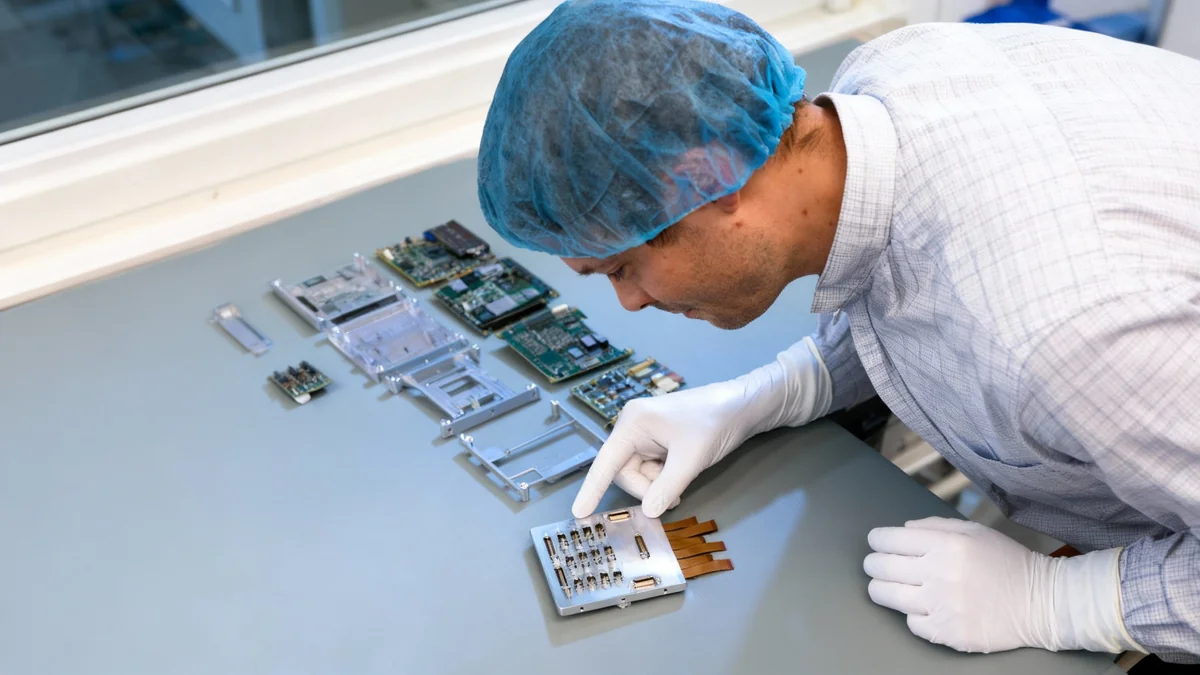California-based aerospace company Inversion has introduced a new reusable spacecraft named Arc, designed to deliver cargo from orbit to any location on Earth in under one hour. The vehicle is being developed primarily to support logistics for the United States military and its allies, offering a rapid deployment capability for critical supplies.
The company announced the project on October 1, outlining its vision for a network of orbital platforms that can respond to logistical needs with unprecedented speed. The Arc vehicle is also intended to serve as a platform for hypersonic technology testing, leveraging its ability to travel at more than 20 times the speed of sound during reentry.
Key Takeaways
- Inversion has revealed the Arc, a reusable spacecraft for rapid global cargo delivery from orbit.
- The system is designed to deliver supplies to any point on Earth in less than 60 minutes.
- A primary use case is providing logistical support for the U.S. military and its allies.
- The spacecraft's first orbital mission is scheduled for 2026.
- Arc will also function as a testbed for hypersonic technologies, capable of speeds exceeding Mach 20.
A New Approach to Global Logistics
Inversion aims to establish space as a new domain for logistics. The Arc spacecraft is central to this plan, functioning as a mobile, orbital warehouse that can be deployed on demand. This capability could change how time-sensitive materials and equipment are transported across the globe.
Justin Fiaschetti, the CEO and Co-founder of Inversion, explained the strategic vision behind the project. He emphasized the vehicle's unique flight characteristics and its potential to create a robust delivery network.
"We see a future where thousands of Arc spacecraft form a logistics network that provides transformative reach, resilience, and deterrence for the United States and its allies," Fiaschetti stated.
The company believes this network will offer a level of speed and access that current transportation methods cannot match. The concept relies on positioning cargo in orbit, ready for immediate dispatch to any terrestrial location.
Vehicle Design and Capabilities
The Arc spacecraft is an autonomous, reusable vehicle with a compact design. It measures 8 feet in length and 4 feet in width (approximately 2.4 by 1.2 meters). Its design focuses on maneuverability and precision, both in orbit and during its return to Earth.
Arc Spacecraft Specifications
- Dimensions: 8 ft x 4 ft (2.4m x 1.2m)
- Operation: Fully autonomous and reusable
- Delivery Time: Under 60 minutes globally
- Reentry Speed: Capable of maneuvering at over Mach 20
- Landing System: Parachute-aided for pinpoint touchdowns
During reentry, the vehicle is engineered to handle extreme conditions while maintaining a high degree of control. This maneuverability allows it to cover significant distances, a feature Inversion calls "massive cross-range," enabling it to adjust its landing zone effectively.
Dual-Use Technology
Beyond its primary logistics role, Arc's performance makes it a valuable asset for research and development. The ability to fly at hypersonic speeds—greater than 20 times the speed of sound—positions it as an ideal testbed for hypersonic technologies. This dual-use capability allows for testing materials, sensors, and control systems in a real-world flight environment that is difficult and expensive to replicate otherwise.
The landing system is designed for precision. After reentering the atmosphere, Arc will deploy a parachute to perform a controlled, soft touchdown, allowing for the safe recovery of the vehicle and its cargo.
Development and Mission Timeline
Inversion has established a clear roadmap for bringing the Arc spacecraft into operational service. The company has already made significant progress in its development and testing phases, with the first orbital flight targeted for 2026.
Austin Briggs, Inversion's Co-founder and Chief Technical Officer, detailed the team's progress. "Our team is on schedule to fly Arc's first mission in 2026," he confirmed. Briggs also highlighted several key milestones that have been achieved.
"We’ve already built a full-scale manufacturing development unit of the primary structure, completed our first mission profile and run dozens of drop tests to fine-tune accurate landings," Briggs added. "Every milestone brings Arc closer to flight maturity, and the pace of progress is only accelerating."
The company is also collaborating with NASA on a next-generation thermal protection system. This partnership is crucial for developing materials that can withstand the extreme heat generated during hypersonic reentry.
The 'Ray' Pathfinder Mission
Before developing Arc, Inversion launched a technology demonstrator named Ray. This precursor vehicle was sent to orbit in January aboard SpaceX's Transporter 12 rideshare mission. While a propulsion issue prevented Ray from performing its planned reentry, Inversion deemed the mission a success. The company stated that the pathfinder validated several key technologies in the orbital environment, providing essential data that directly informed the design and development of the Arc spacecraft.
The Growing Field of Orbital Logistics
Inversion is not the only company exploring the potential of returning goods from orbit. The sector, often referred to as in-space manufacturing and orbital delivery, is attracting significant attention and investment. Several companies are developing similar capabilities, each with a slightly different focus.
For instance, Varda Space Industries is focused on manufacturing high-value products like pharmaceuticals in microgravity and returning them to Earth. The company has already launched and successfully returned multiple capsules. Another company, Outpost, is working on reusable satellites that can also function as "orbital shipping containers" capable of delivering cargo to Earth within 90 minutes.
These efforts signal a broader shift toward utilizing Earth's orbit not just for observation and communication, but as an active part of global infrastructure. If successful, Inversion's Arc could establish a new standard for rapid, high-priority logistics, particularly for defense and emergency response applications.





